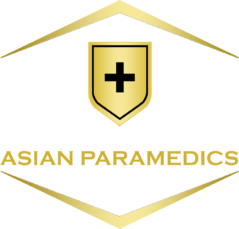Microscopic Techniques MCQs
- Which of the following is a common type of microscope used in histology?
- A. Scanning electron microscope
- B. Light microscope ✅
- C. Fluorescence microscope
- D. Atomic force microscope
- What is the primary purpose of using immersion oil in microscopy?
- A. To clean the lens
- B. To increase resolution by reducing light refraction ✅
- C. To prevent lens fogging
- D. To enhance color contrast
- Which component of the microscope adjusts the amount of light entering the specimen?
- A. Coarse focus
- B. Diaphragm ✅
- C. Objective lens
- D. Condenser lens
- What is the purpose of staining in microscopy?
- A. To preserve the tissue structure
- B. To enhance contrast and differentiate tissue components ✅
- C. To increase tissue hydration
- D. To increase magnification
- Which part of the microscope is responsible for focusing the light on the specimen?
- A. Coarse focus
- B. Condenser lens ✅
- C. Objective lens
- D. Illuminator
- In electron microscopy, which of the following is used instead of light?
- A. X-rays
- B. Electrons ✅
- C. Lasers
- D. Infrared radiation
- Which technique is used to visualize the three-dimensional structure of a sample?
- A. Confocal microscopy ✅
- B. Brightfield microscopy
- C. Phase contrast microscopy
- D. Polarizing microscopy
- Which of the following is an advantage of fluorescence microscopy?
- A. It provides detailed color images
- B. It can visualize specific molecules within cells ✅
- C. It requires no staining
- D. It produces high-resolution images of structures
- Which type of microscope uses a laser to scan the specimen and produce images?
- A. Confocal microscope ✅
- B. Electron microscope
- C. Fluorescence microscope
- D. Phase contrast microscope
- What is the purpose of the condenser lens in light microscopy?
- A. To focus light onto the specimen ✅
- B. To magnify the specimen
- C. To filter light
- D. To adjust the contrast
- In which of the following microscopy techniques are electrons used instead of light?
- A. Fluorescence microscopy
- B. Scanning electron microscopy ✅
- C. Transmission electron microscopy ✅
- D. Brightfield microscopy
- Which microscope is best suited for viewing live cells in their natural state?
- A. Phase contrast microscope ✅
- B. Scanning electron microscope
- C. Fluorescence microscope
- D. Polarizing microscope
- Which feature of a microscope is primarily responsible for magnifying the image of the specimen?
- A. Illuminator
- B. Objective lens ✅
- C. Condenser lens
- D. Eyepiece lens
- Which microscopy technique is most commonly used to observe thick tissue sections?
- A. Brightfield microscopy
- B. Confocal microscopy
- C. Polarizing microscopy
- D. Phase contrast microscopy ✅
- Which of the following microscopes provides a high magnification of surface features of a specimen?
- A. Transmission electron microscope
- B. Scanning electron microscope ✅
- C. Fluorescence microscope
- D. Confocal microscope

